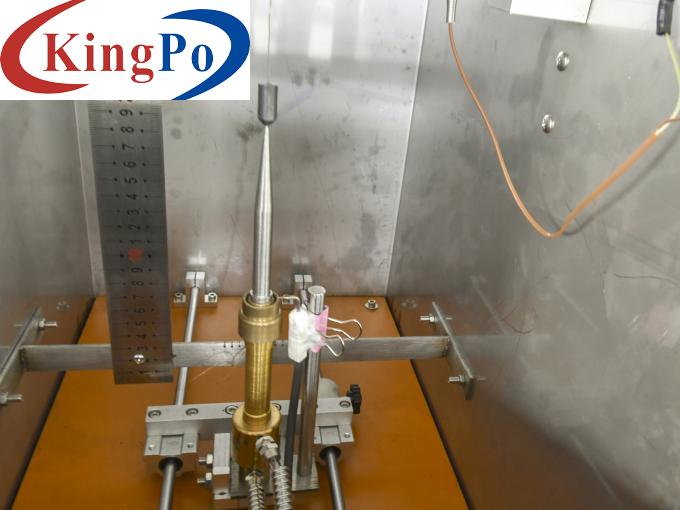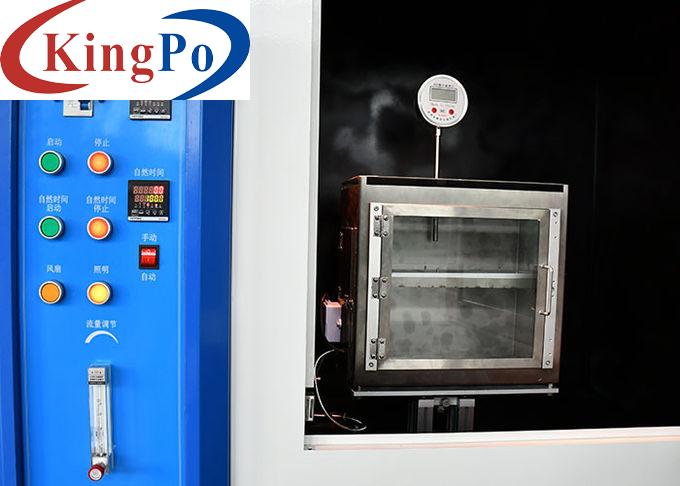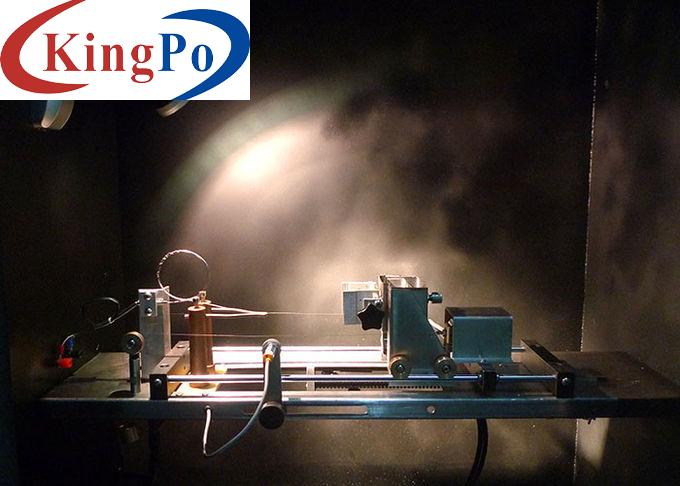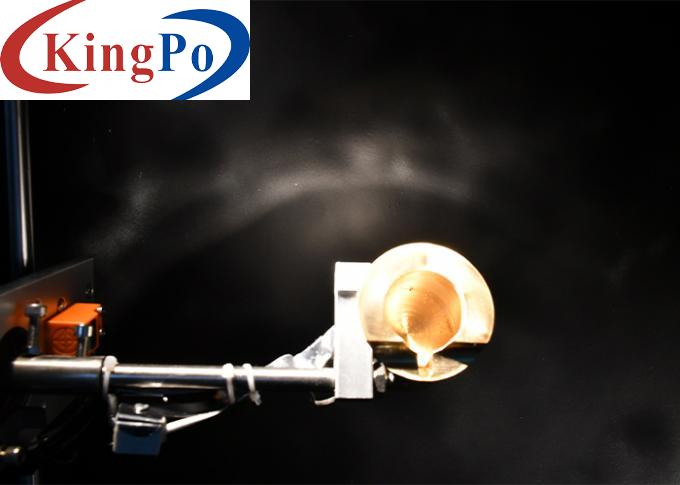Products
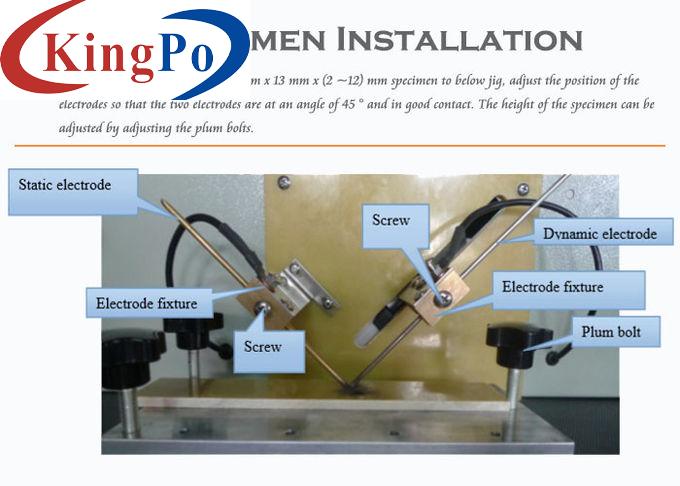
UL 746A UL 498 Polymeric Materials Flammability Test Chamber High Current Arc Ignition Test
Products Description
UL 746A UL 498 High-Current Arc Ignition Performance Solid Insulating Materials Flammability Testing Equipment
Overview:
The high current arc ignition test apparatus conforms to UL 746A clause 33, UL746C clause 49, UL 498 clause 114, IEC 60950-1, BS EN 60950-1, BS 7002, etc.
This flammability test chamber is useful in differentiating among solid insulating materials about resistance to ignition from arcing electrical sources. It is suitable for arcing resistance tests of the materials of electrical and electronic products, household appliances and etc.
Working Principle:
The working principle is to simulate the electric leakage on the insulator which may be caused among different polar of live parts or between live parts and grounded (earthed) metal parts. It is used to measure and assess the arc resistance performance of insulator under the prescribed voltage.
High current arc ignition tester adopts dual electrodes. With the specific current (33A) and power factor (COSφ0.5), according to a certain arc strike speed (254mm/s) and repetition frequency (40 times/min), repeatedly arc strike to 200 times on the surface of the specimen. The high current arc ignition performance (HAI) can be assessed according to whether the sample can be ignited.
Technical Parameters:
Ф3.5mm 30° Copper(Static) electrode
Ф3.0mm 60° Stainless Steel(Dynamic) electrode
Test Procedure:
The test is to be conducted on five specimens. Each specimen, in turn, is to be clamped flat so that the longitudinal axis of the sample is normal to the common vertical plane of the electrodes. The fixed electrode is to be secured in place such that the chisel edge is in firm contact with the top surface of the specimen with sufficient force to ensure the electrode remains stationary during the test, but does not cause significant physical damage to the specimen. The point of contact of the fixed electrode is not to be less than 4 mm from any edge of the sample. The moveable electrode is to be adjusted such that it contacts the fixed electrode between 0.75 to 1.00mm above the surface of the specimen. The movable electrode is to be secured in position. The equipment is to be adjusted to provide a dwell time of 100±20ms before electrode withdrawal breaks the circuit and the timing of the arcs is to be adjusted to a rate of 40 complete arcs per minute. The circuit is to be energized and the cyclic arcing started. The test is to be continued until ignition of the sample occurs, a hole is burned through the sample, or until a total of 150 cycles has elapsed.
If ignition or a hole through any specimen occurs, an optional above-surface test may be conducted. This optional test is conducted on an additional set of three samples tested with the electrodes making contact a maximum of 1.6mm above the surface of the specimen. Should ignition or a hole occur within 150 cycles, an additional set of three samples may optionally be tested with the electrodes making contact a maximum of 3.2mm above the surface of the specimens. A hole caused by the fixed electrode impinging on the sample or initiating a tear is to be excluded from the test results. Or holes caused by combusting the sample, as a result of arcing, are to be recorded and included in the report.
The following is to be recorded as applicable:
a) The number of arcs to cause ignition.
b) The number of arcs to cause a hole through the sample
c) The maximum number of cycles, 150.
d) Observations regarding meltning, charring, or the like.
Electrodes
Arc strike current
33A
Arc strike voltage
220-240V
Electrode running speed
254mm/s±25mm/s
Arc strike frequency
40times/min
Power factor
COSφ0.5
Test times
0-9999 times
Power source
220VAC, 60Hz high capacity source


